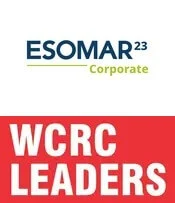
- Global Market Outlook
- In-depth analysis of global and regional trends
- Analyze and identify the major players in the market, their market share, key developments, etc.
- To understand the capability of the major players based on products offered, financials, and strategies.
- Identify disrupting products, companies, and trends.
- To identify opportunities in the market.
- Analyze the key challenges in the market.
- Analyze the regional penetration of players, products, and services in the market.
- Comparison of major players’ financial performance.
- Evaluate strategies adopted by major players.
- Recommendations
- Vigorous research methodologies for specific market.
- Knowledge partners across the globe
- Large network of partner consultants.
- Ever-increasing/ Escalating data base with quarterly monitoring of various markets
- Trusted by fortune 500 companies/startups/ universities/organizations
- Large database of 5000+ markets reports.
- Effective and prompt pre- and post-sales support.
In-depth Analysis of Light Field Market Industry Landscape
Recent years have seen significant changes in the light field industry, mostly due to increased uses across a wide range of sectors and technical improvements. In order to provide customers a more realistic and immersive experience, this industry is centered upon the collection, processing, and display of light beams in three dimensions. The increasing need for augmented reality (AR) and virtual reality (VR) applications is one of the main factors influencing market dynamics. The need for complex light field solutions has increased as a result of the adoption of these technologies by sectors including gaming, healthcare, and automotive.
By allowing more realistic and participatory gameplay, light field technology has completely changed the gaming industry and its user experiences. Enhancing the sensation of presence and immersion in a virtual world is possible when the depth of field can be captured and replicated. Due to this, there is an increasing need for light field cameras and displays made specifically for use in video games. Furthermore, light field imaging has been used by the healthcare sector for uses including surgical simulation and medical imaging. Light field technology provides three-dimensional imaging that helps medical practitioners diagnose patients more accurately and improves surgical results.
Another important actor in the dynamics of the light field market is the automobile sector. Advanced driver-assistance systems (ADAS) are improved by the incorporation of light field cameras into cars because they provide a more accurate and comprehensive picture of the surrounding area. This is especially important for autonomous cars since safe navigation depends on accurate perception of distance and depth. With automakers continuing to pour money into autonomous driving systems, light field solutions should become much more in demand.
Furthermore, the way that information is produced and consumed has evolved has had a significant impact on the light field industry. Content that provides a more realistic experience is becoming more and more necessary as high-quality screens proliferate and streaming services become more and more popular. By capturing a scene's depth and perspective, light field technology meets this need and enables content producers to create more captivating and immersive graphics. The light field business is anticipated to see changes in market dynamics as customer demands for realistic content continue to rise.
However, issues like exorbitant manufacturing costs and little customer awareness stand in the way of light field technology's broad use. Light field solutions' complex hardware and software requirements drive up manufacturing costs, which prevents some market segments from accessing them. Furthermore, despite its promise, there is still a need for companies and consumers to be better informed about the uses and advantages of light field technology.
| Report Attribute/Metric | Details |
|---|---|
| Segment Outlook | Technology, Vertical, and Region |
Light Field Market Highlights:
Leading companies partner with us for data-driven Insights
Kindly complete the form below to receive a free sample of this Report
Tailored for You
- Dedicated Research on any specifics segment or region.
- Focused Research on specific players in the market.
- Custom Report based only on your requirements.
- Flexibility to add or subtract any chapter in the study.
- Historic data from 2014 and forecasts outlook till 2040.
- Flexibility of providing data/insights in formats (PDF, PPT, Excel).
- Provide cross segmentation in applicable scenario/markets.









